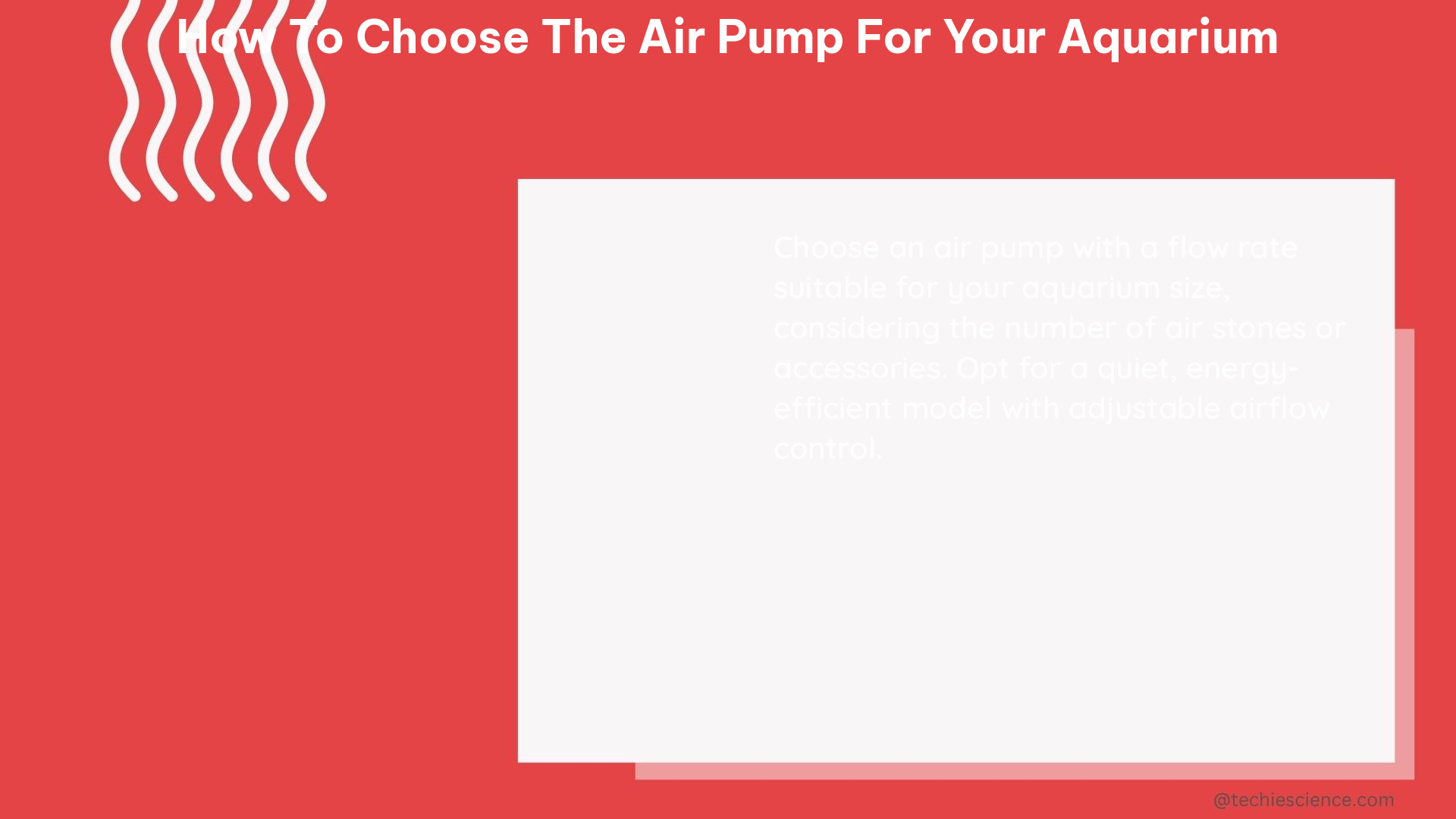When it comes to maintaining a healthy and thriving aquarium, the air pump plays a crucial role in providing the necessary oxygen and water circulation. Choosing the right air pump can be a daunting task, but with the right information, you can make an informed decision that will ensure the well-being of your aquatic inhabitants. In this comprehensive guide, we’ll delve into the key factors to consider when selecting the perfect air pump for your aquarium.
Tank Size and Air Pump Capacity
The size of your aquarium is the primary factor in determining the appropriate air pump. As a general rule, you should choose an air pump that can output at least 1 gallon per hour (GPH) for every gallon of water in your tank. For example, if you have a 50-gallon tank, you’ll need an air pump that can deliver at least 50 GPH.
To ensure optimal oxygenation and water movement, it’s essential to match the air pump’s capacity to the size of your aquarium. Underpowered air pumps may struggle to provide sufficient aeration, while overpowered pumps can create excessive turbulence and disrupt the delicate balance of your aquarium ecosystem.
Flow Rate and Adjustability

The flow rate of the air pump, measured in liters per minute (LPM) or gallons per hour (GPH), is another crucial consideration. The flow rate should be adjustable to accommodate the specific needs of your aquarium.
For smaller tanks with fewer fish, a lower flow rate may be sufficient, as it will create a gentler water movement and avoid disrupting the delicate balance of your aquarium. Conversely, larger tanks with a higher fish load may require a higher flow rate to ensure adequate oxygenation and water circulation.
Look for air pumps with variable flow rate settings or built-in flow control mechanisms, which will allow you to fine-tune the output to suit your aquarium’s requirements.
Noise Level and Vibration
The noise level and vibration of the air pump are essential factors, especially if your aquarium is located in a living space or bedroom. Excessive noise can be disruptive and create an unpleasant environment for both you and your aquatic inhabitants.
When selecting an air pump, look for models with a noise level of less than 40 decibels (dB). This level of noise is generally considered quiet and will not interfere with the peaceful ambiance of your aquarium setup.
Additionally, consider the vibration produced by the air pump, as excessive vibration can cause the pump to move around and potentially damage the aquarium or surrounding surfaces. Look for air pumps with anti-vibration features, such as rubber feet or mounting brackets, to minimize the impact of vibrations.
Power Consumption and Energy Efficiency
The power consumption of the air pump is another important factor to consider, especially if you’re concerned about your energy bills or environmental impact. Look for energy-efficient air pumps that consume less power, measured in watts (W).
Energy-efficient air pumps not only save you money on electricity but also contribute to a more sustainable aquarium setup. These pumps often feature advanced technologies, such as brushless motors or energy-saving modes, to optimize power usage without compromising performance.
Technical Specifications and Compatibility
When choosing an air pump, pay close attention to the technical specifications to ensure it’s compatible with your aquarium setup. Key specifications to consider include:
- Maximum operating depth: Ensure the air pump can handle the depth of your aquarium, especially if you have a tall or deep tank.
- Air pressure: The air pump should be able to provide the necessary air pressure to power your aquarium accessories, such as air stones or decorations.
- Air flow rate: The air flow rate, measured in LPM or GPH, should match the size and requirements of your aquarium.
By carefully reviewing these technical specifications, you can ensure that the air pump you select is suitable for your aquarium and will provide the optimal performance and functionality.
Measuring Air Pump Performance
To accurately assess the performance of an air pump, you can use a few simple methods:
-
Flow Rate Measurement: Place a measuring cup over the air pump’s output and time how long it takes to fill the cup with bubbles. Divide the volume of the cup by the time it takes to fill to calculate the flow rate in LPM or GPH.
-
Noise Level Measurement: Use a decibel meter to measure the noise level of the air pump. Position the meter approximately 6 inches away from the pump and take a reading. The lower the decibel reading, the quieter the air pump.
-
Power Consumption Measurement: Use a watt meter or energy monitoring device to measure the power consumption of the air pump in watts (W). This will help you identify energy-efficient models that align with your budget and environmental concerns.
By conducting these measurements, you can ensure that the air pump you choose meets your aquarium’s specific requirements and provides the optimal performance for your aquatic ecosystem.
Conclusion
Choosing the right air pump for your aquarium is a crucial step in maintaining a healthy and thriving environment for your aquatic inhabitants. By considering factors such as tank size, flow rate, noise level, power consumption, and technical specifications, you can make an informed decision that will ensure the long-term success of your aquarium.
Remember, the air pump is a vital component of your aquarium setup, and investing in the right one can make all the difference in the well-being of your aquatic life. With this comprehensive guide, you’ll be equipped with the knowledge and tools to select the perfect air pump for your aquarium, ensuring a vibrant and sustainable underwater ecosystem.
References:
– Measuring Air Pump Flow Rate and Noise Level
– What is an Aquarium Air Pump and Is It Necessary?
– Aquarium Air Pump: Everything You Need to Know
